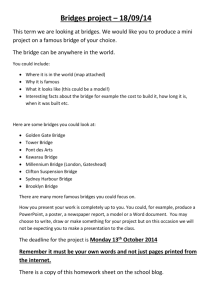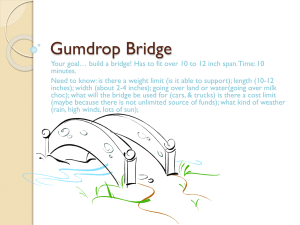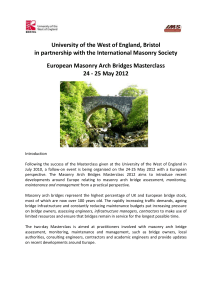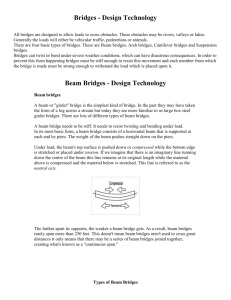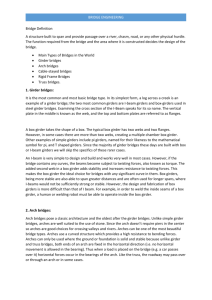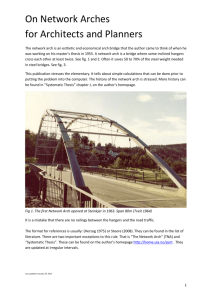File
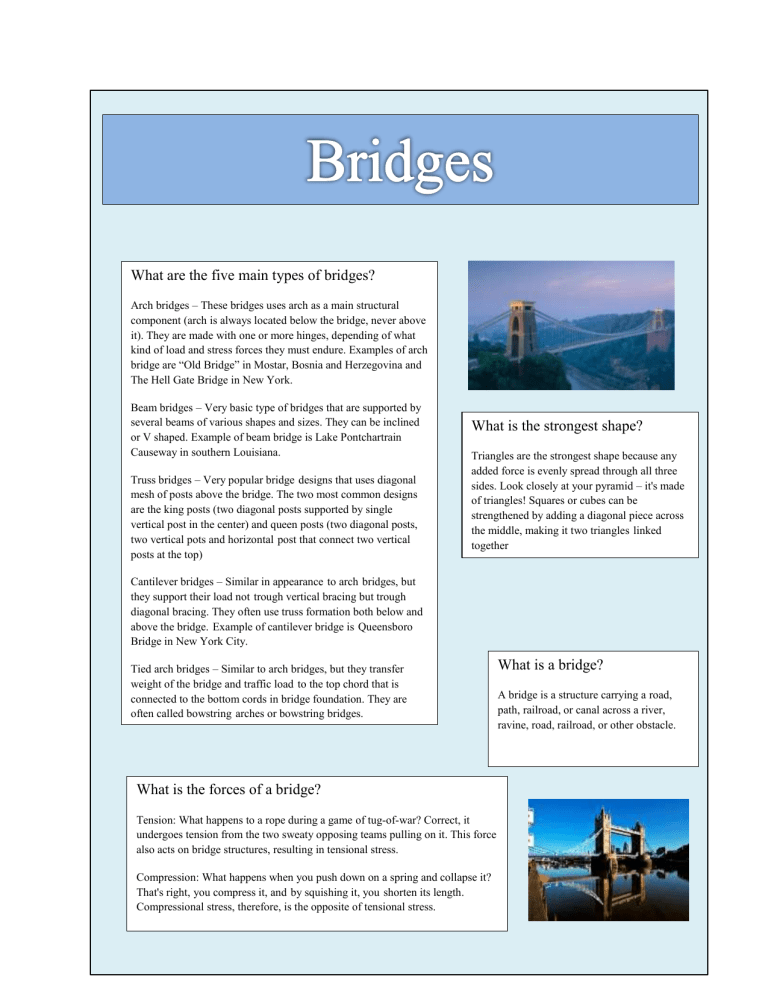
What are the five main types of bridges?
Arch bridges – These bridges uses arch as a main structural component (arch is always located below the bridge, never above it). They are made with one or more hinges, depending of what kind of load and stress forces they must endure. Examples of arch bridge are “Old Bridge” in Mostar, Bosnia and Herzegovina and
The Hell Gate Bridge in New York.
Beam bridges – Very basic type of bridges that are supported by several beams of various shapes and sizes. They can be inclined or V shaped. Example of beam bridge is Lake Pontchartrain
Causeway in southern Louisiana.
Truss bridges – Very popular bridge designs that uses diagonal mesh of posts above the bridge. The two most common designs are the king posts (two diagonal posts supported by single vertical post in the center) and queen posts (two diagonal posts, two vertical pots and horizontal post that connect two vertical posts at the top)
Cantilever bridges – Similar in appearance to arch bridges, but they support their load not trough vertical bracing but trough diagonal bracing. They often use truss formation both below and above the bridge.
Example of cantilever bridge is Queensboro
Bridge in New York City.
Tied arch bridges – Similar to arch bridges, but they transfer weight of the bridge and traffic load to the top chord that is connected to the bottom cords in bridge foundation. They are often called bowstring arches or bowstring bridges.
What is the strongest shape?
Triangles are the strongest shape because any added force is evenly spread through all three sides. Look closely at your pyramid – it's made of triangles! Squares or cubes can be strengthened by adding a diagonal piece across the middle, making it two triangles linked together
What is a bridge?
A bridge is a structure carrying a road, path, railroad, or canal across a river, ravine, road, railroad, or other obstacle.
What is the forces of a bridge?
Tension: What happens to a rope during a game of tug-of-war? Correct, it undergoes tension from the two sweaty opposing teams pulling on it. This force also acts on bridge structures, resulting in tensional stress.
Compression: What happens when you push down on a spring and collapse it?
That's right, you compress it, and by squishing it, you shorten its length.
Compressional stress, therefore, is the opposite of tensional stress.




